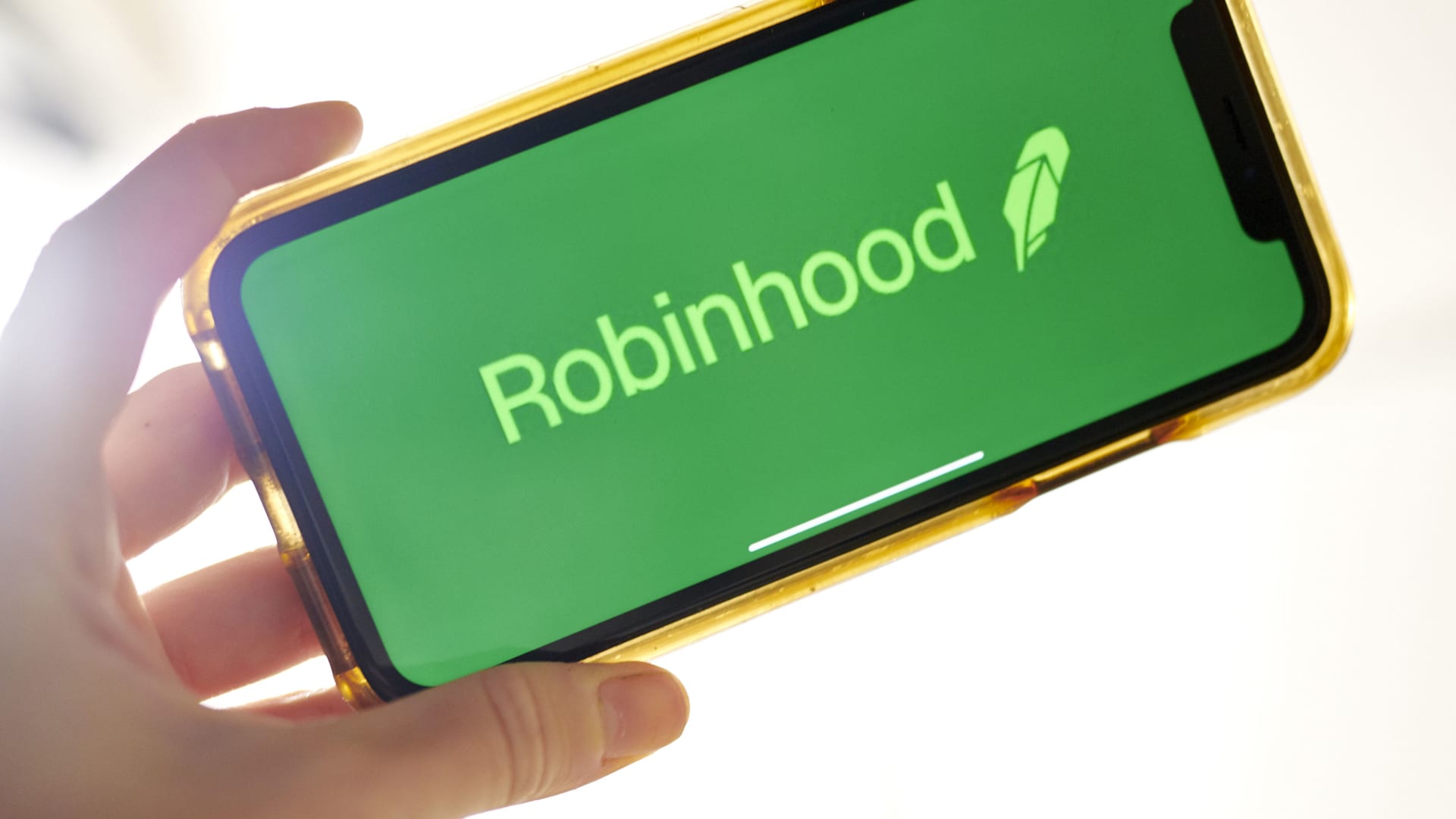
Retail brokerage company Robinhood reported a wider-than-expected loss and shrinking income for the primary quarter, appearing indicators that the small-dollar buying and selling increase that captivated Wall Boulevard a yr in the past could have run out of steam.
Stocks of the corporate had been down greater than 11% in after hours buying and selling, hitting all-time lows.
Robinhood emerged as some of the key gamers in ultimate yr’s meme inventory saga, with retail buyers signing up for accounts and serving to pressure fast strikes in shares like GameStop. That made for tricky comparisons within the first quarter, however the slowdown in buying and selling task used to be much more dramatic than expected.
The emblem for Robinhood is displayed on a smartphone in an organized {photograph}.
Gabby Jones | Bloomberg | Getty Photographs
“Our greater shoppers are nonetheless last energetic, however we’re seeing extra pronounced declines from those who have decrease balances,” CEO Vlad Tenev stated on a convention name with traders and analysts. “With the uncertainty out there, our shoppers changed into extra wary with their portfolios.”
Here is what the corporate reported when compared with what Wall Boulevard used to be anticipating, according to a survey of analysts through Refinitiv:
- Losses in keeping with proportion: 45 cents vs. 36 cents anticipated
- Income: $299 million vs. $355.8 million anticipated
For the 3 months ended March 31, Robinhood stated its loss narrowed to $392 million, or 45 cents in keeping with proportion, from a lack of $1.4 billion, or $6.26 in keeping with proportion, a yr in the past. Income fell 43% from a yr in the past to $299 million.
Robinhood stated its per 30 days energetic customers declined to fifteen.9 million, down from 17.7 million within the yr in the past duration and 17.3 million within the earlier quarter. The corporate’s reasonable income in keeping with person got here in at $53, down from $137 a yr prior and $64 within the earlier quarter.
The brokerage’s major income is a convention referred to as cost for order glide. Regardless that buying and selling is loose from the buyer’s standpoint, Robinhood earns a range at the trades that it sends to huge buying and selling homes.
So as to jumpstart income and person enlargement, Robinhood has been introducing new merchandise and lines. The corporate introduced in overdue March that it had expanded prolonged buying and selling hours.
Robinhood additionally rolled out crypto wallets to shoppers previous in April. Within the first quarter, income from crypto buying and selling declined to $54 million, however that surpassed the $36 million from equities buying and selling. The ones numbers had been $88 million and $133 million, respectively, a yr in the past.
Choices buying and selling used to be the largest space of income at $127 million, down from $198 million a yr in the past.
“This tale used to be the tale of 2 competing forces — our accelerating product construction juxtaposed in opposition to a troublesome macroeconomic local weather,” Tenev stated.
Robinhood could also be looking at its prices. On Tuesday, Robinhood stated it is going to lower its full-time personnel through about 9%, bringing up “reproduction roles and process purposes” for the layoffs.
The corporate stated Thursday it now expects running bills to extend between 2% and 5% in 2022, with the exception of share-based reimbursement. Earlier steerage referred to as for an build up of 15% to twenty%.
Tenev stated the corporate aimed to have sure adjusted EBITDA — or profits sooner than hobby, taxes, depreciation and amortization — through the top of the yr. That metric confirmed a lack of $143 million within the first quarter.
Robinhood went public in July 2021 at $38 in keeping with proportion, however the inventory has struggled to seek out traction. It closed at $10.09 in keeping with proportion on Thursday sooner than falling after effects had been launched.
